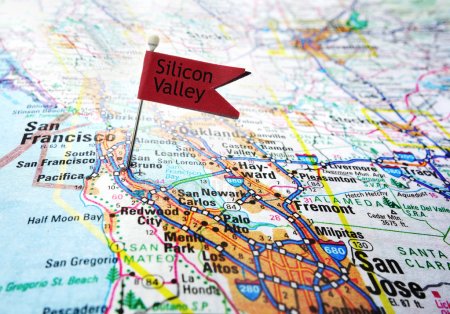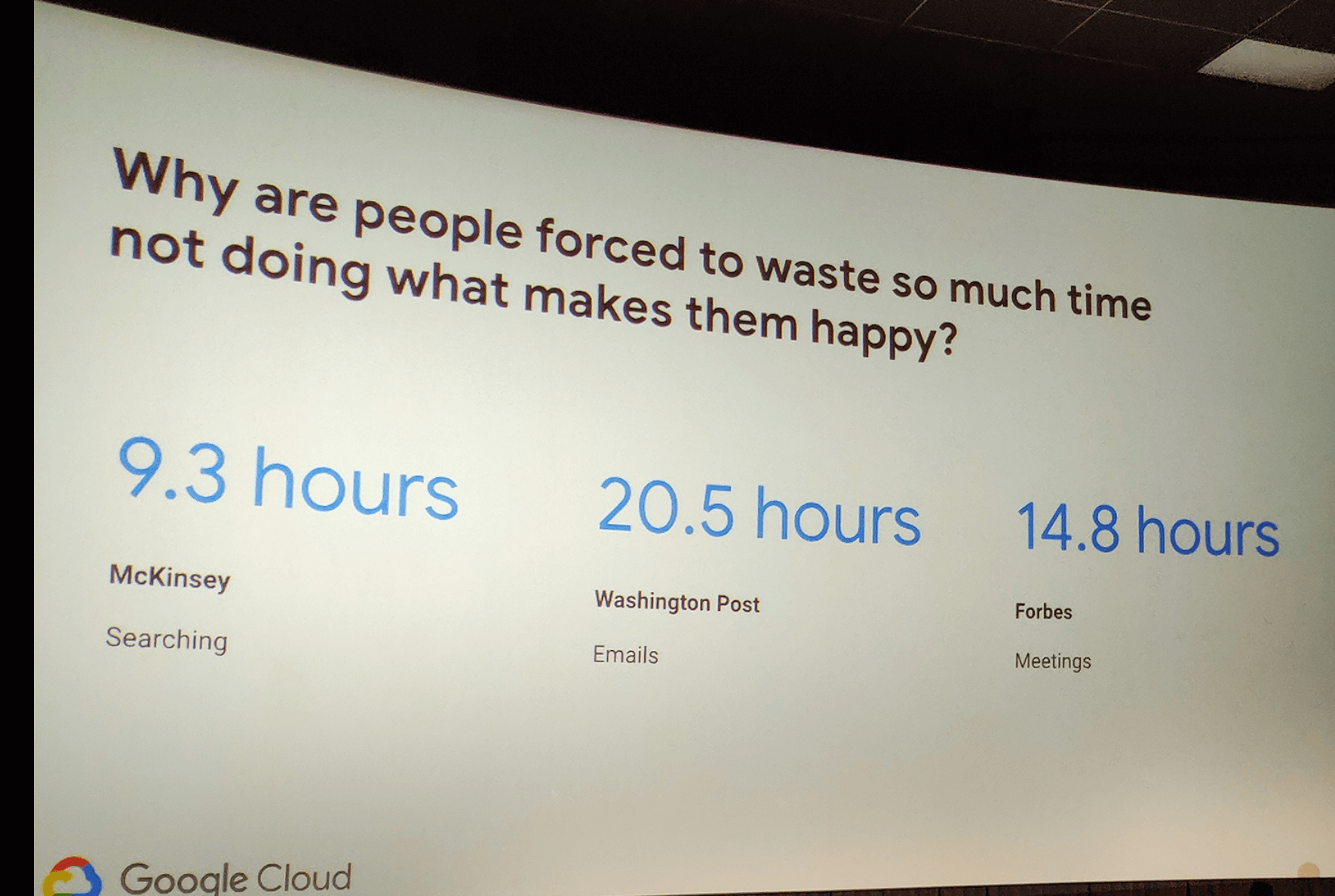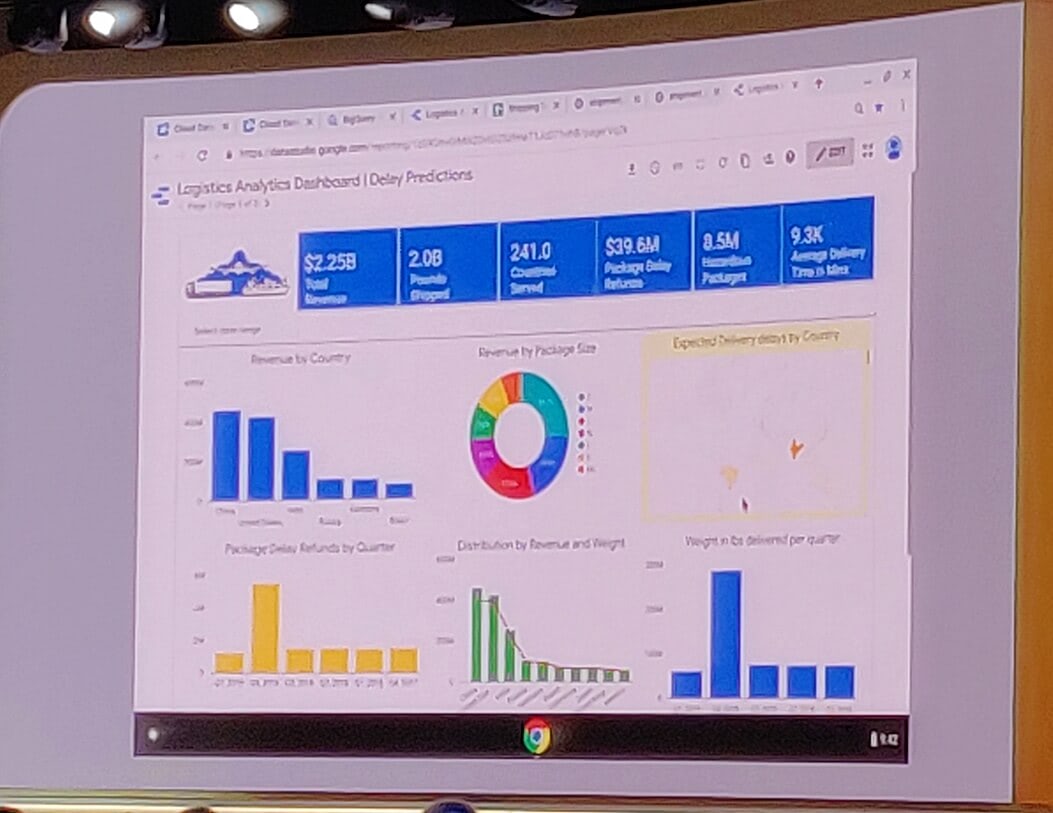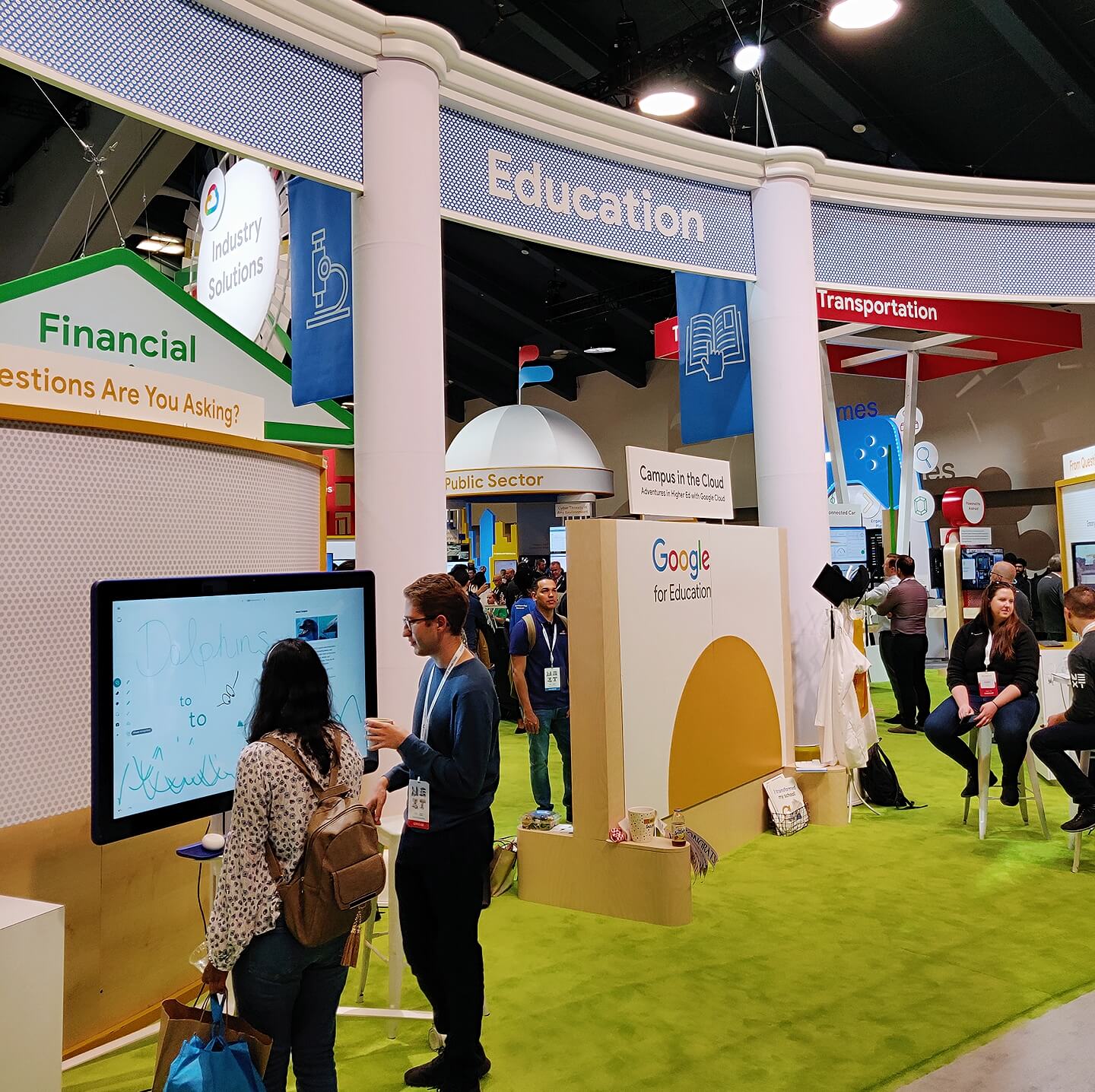From Silicon Valley To The Classroom: #EdTech Lessons From The West Coast

American internet entrepreneur Reid Hoffman, Co-Founder of LinkedIn, once said that Silicon Valley is a mindset, not a location.
Having recently spent some time at a large technology event in San Francisco, the home of Silicon Valley, that description feels about right.
I was attending Google Next19, a gathering of global technology entrepreneurs sharing the latest insights on key emerging technology trends shaping our world.
As I attended numerous briefings on key trends and met with tech entrepreneurs you couldn’t help but sense the sheer pace at which the world of work is changing right now.
Cloud technology has moved from a ‘new thing’ to the foundation on which new things are being built.
As generation Z enters the world of work they will need to be equipped with how to use cloud based, agile and collaborative technology to support economic growth and prosperity and this has implications for the digital strategies deployed by our Colleges and Universities.

During my time at Next19 I had the chance to use the new Google gaming platform, Stadia, a system that runs entirely through the cloud.
No local based storage device or in fact hardware at all.
Thinking of Universities and Colleges teaching games design and similar subjects there are significant implications and opportunities.
Just as the concept of the ‘games console’ will soon come to an end, so does the need to pay for expensive computers to deliver games design courses on since both the software and the power required to run such courses can be delivered and powered entirely in the cloud.
In short, an organisation could deliver high end game design provision via a device such as a Chromebook costing less than £200, compared to a £2000 PC. This is the kind of disruptive opportunity technology provides.
The days of computing labs filled with highly specialist and expensive computers are numbered. The devices are now in the cloud. All a College or University needs is an inexpensive device to connect to the internet.
Work smarter by making technology work harder

Workload pressures are a hot topic in education. The UK Secretary of State for Education, Damian Hinds, recently commented that there is no ‘golden lever’ for addressing this issue.
It’s not a view I subscribe to. The Education Secretary could learn a lesson from the golden coast, where he might find his golden lever.
We spend a lot of time doing things we don’t need to because they are learned behaviours and relate to structures and processes designed for another time.
How much time do you spend on emails? Ever added it all up then thought about how productive that time actually was? One thing was clear from my visit to the home of Silicon Valley, emerging technologies like artificial intelligence and machine learning are transforming our world right now and can save us time and money.
Taking email as an example, artificial intelligence and machine learning is now writing nearly half of my emails by learning how I speak and predicting it, so my time spent on email has broadly halved.
Go back to how much time you spend on emails, then amplify it by the number of people in your organisation. Then find out the average hourly pay rate in your organisation, put the two together, and there you have the real impact of artificial intelligence and machine learning right now today in pounds just from using GMail.
This powerful yet simple calculation can demonstrate the impact for those smart enough to be using it or those smart enough to be making the case to. Chances are you are already feeling the benefit of this as more than 1.4 billion people use GMail globally, a billion more than it’s nearest rival.
The wow factor
It’s not often in life we see things that genuinely have the wow factor. A wow moment for me was when I first played Mario 64, a truly groundbreaking video game that ran in full 3D as opposed to 2D graphics.

The technology was groundbreaking at the time and seemed like digital magic.
I experienced another moment like this at Google Next 19 where a presenter demonstrated taking some data on a basic spreadsheet and combining it with BigQuery BI Engine that uses machine learning to predict what you are trying to do.
Within less than a minute and just a couple of clicks an intelligent dashboard had been created. It was so simple that anyone could do it. Technology should be simple to use and make life better, and that’s exactly what this solution demonstrated.
Imagine taking a spreadsheet showing withdrawal data for your College for three years along with some simple additional data fields like age and postcode etc. Then running it through BigQuery BI Engine and within a few seconds knowing who is most likely to drop out of your College with forensic detail and accuracy.
The most exciting aspect of this demonstration to me was how easy it was. Google had taken all the complex work using artificial intelligence and machine learning and packaged it in such a way that it became accessible to anyone and in doing so, democratised complex technology normally in the hands of the few.

Disruptive personalisation
For an example of how disruptive technology can be I met a company in San Francisco who are using analytics and artificial intelligence to provide personal car insurance calculated on your daily behaviours on a daily pay as you go basis.
When you think about it, this makes perfect sense. An annual car insurance policy less so. Wouldn’t it be better to pay each day based on your highly personalised profile?
It would certainly end any bad feeling about paying premiums for less careful drivers. This kind of disruption is happening now and it has significant potential for personalised learning.

Typically when I see differentiation lessons as part of teacher training it’s nearly always delivered as a highly structured process, the irony of which is not lost on me.
Differentiation is important but it’s most effective when combined with unprecedented insights enabled by artificial intelligence technology, as few people could assemble and analyse the variables involved and eliminate any unconscious bias as fast or as effective as software can.
This same approach can enable personalised learning pathways in new, more effective ways that enhance engagement and success.
“I believe AI and its benefits have no borders. Whether a breakthrough occurs in Silicon Valley, Beijing, or anywhere else, it has the potential to make everyone’s life better for the entire world.” – Fei-Fei Li, Professor of Computer Science, Stanford University.

Seeing the impact of artificial intelligence, machine learning, personalisation and wider trends shaping our world it’s clear that educators need to be both aware of these trends and able to harness their potential whether in reducing attrition rates, reducing workloads or supporting growth, items high on the agenda of most educators I know.
Reflecting on my time in San Francisco if we accept that at least part of the purpose of education is to enable people to make the most of the world we are in, then cloud technology combined with the array of software solutions like artificial intelligence and machine learning will increasingly shape our learning experiences providing unprecedented insights into personalised engagement and success. Smart institutions will embrace and leverage these tools to support their strategic ambitions.
Founder of Ebay Pierre Omidyar once said that companies in Silicon Valley invest a lot in understanding their users and what drives user engagement. For educators seeking to engage, enrich and inspire, using technology that can enable this is perhaps one of the greatest lessons from Silicon Valley.
Jamie E Smith, Executive Chairman C-Learning













Responses